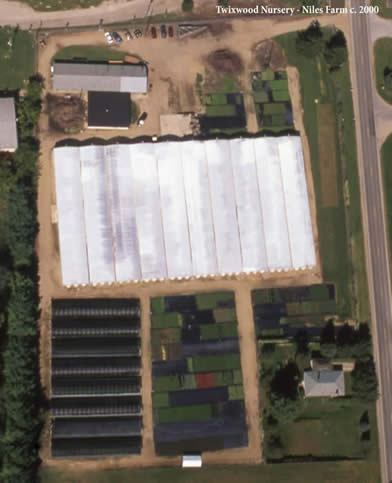And so our nursery social media person has informed me that I need to pound out a Blog once a week which I am sure would be lovely if I knew what social media was or what a blog is supposed to do or, better yet, if someone told me who has the time to read a blog. The only thing that I can think of is that blogs are for people who did not work hard and save their money when they were young and thus cannot afford professional entertainment on TV. This helps me as it gives me some idea as to what level of erudition I need to aim at when writing.
Today I am writing about ethics in the nursery business and specifically about nativars. If you want to learn more about what people with agendas think of nativars you can look up: “Wild Ones, Native Plants, Natural Landscapes, a voice for the natural landscaping movement, celebrating natives plant and natural landscapes since 1979”. These people have opinions and they are able to state them many times and often. Or, you can look up something called EcoBlog and the article “The Nativar Conundrum: New Research on natives vs. Native Cultivars with Dr. Doug Tallamy.”
And so these people say that a nativar is a cultivar of a native species and the cultivar is the result of artificial selections made by humans. So, it appears that we are dealing with a selection and not with something that comes from a breeding or hybridizing program. I think that something like Sporobolus heterolepis ‘Tara’ is a nativar. I know the person who was walking along and who found it out along a railroad track someplace. This is vegetatively propagated. But, the real purpose of starting this discussion is Carex flacca ‘Blue Zinger’. The reason this is important is because we have way too much of it. It grows very well out in the field and it did not sell well last year so I planted even more left over stuff out in the field. When I have the time to go through the intellectual analysis of this kind of behavior I may be able to figure out where this is heading. In the meantime we are not throwing anything away and it was fun to plant it and watch it grow.
These days we are starting to hang out with the native plant people because that appears to be where the market is headed. They like to specify Carex flacca and we do not have lots of it, and so I am wondering that the ethics are of selling the ‘Blue Zinger’ cultivar (nativar), after all, it started out being Carex flacca. In a very similar situation we have the many Little Bluestems and specifically, Schizachyrium scoparium ‘The Blues’, which is similar to the above mentioned Carex story because the selection is much bluer. Now then, if we had the time and the ability to grow all of these things from seed, we would do that and not have to lay awake nights wondering about how we run the business.
The people who are interested in being ideological about this subject go on at some length about genetic diversity and pollen production. The pollen production issue is because we all of a sudden want to feed as many pollinator insects as possible. And then I look out at the many square miles of fields and wood lots and wonder how a few plants in a few flower beds in a few yards are going to make that much of a difference in this world. I guess it gives meaning to life and that is always a good thing. In olden times people used to spend their lives thinking about the nature of the human soul. Now they just have to think about little insects and how they think and work. It sounds easier and more fun and if you mess up you do not end up in that very hot and uncomfortable place.
When we first got started in the perennial business we were all excited when we could get a named perennial. For example, we grew four varieties of Achilleas for Wayside Gardens. One of them was ‘Apple Blossom’ and I cannot remember the names of the others, but they were all developed over in Germany from some native American prairie plants. We thought it was the right thing to do, to get all kinds of colors and heights so that landscaping would be prettier. You can only imagine my surprise to find out that this is not the right thing to do, that we as nursery personages, should not be finding new and improved plants and should not be vegetatively propagating them so as to keep the strains pure.
Another little flip to this whole thing are plants that do not self-seed. That would be Allium ‘Summer Beauty’ and, I think, some of the Calamintha selections. This makes a person wonder why we worry about these being nativars when any genetic diversity has been selected out of them from the beginning because we do not want rampant self-seeders in our gardens. Anyhow, what we are going to do is try to make some money in the nursery business so that we can continue to offer a steady and wide variety of plant material to our customers. We will label the plants properly and let the customers wrestle with their consciences while we, all of the time, continue to look for whatever plants will be in demand and for whatever reasons. If you can use a nativar that would make our work easier.

